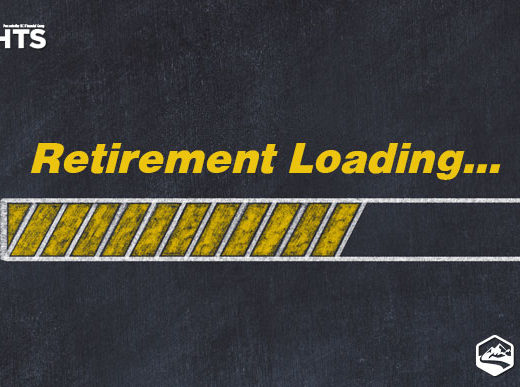What steps could you take to try and catch up?
If life has not allowed you to build substantial retirement savings, what possible steps could you take in an effort to improve your retirement prospects?
You could play catch-up. If you are 50 or older, see if you can make the catch-up contributions the Internal Revenue Service allows for IRAs and other retirement accounts. For example, this year, a worker age 50 or older can direct up to $25,000 into a 401(k) account compared with $19,000 for someone younger.1
You could contribute enough to “get the match.” If your employer matches your workplace retirement account contributions to some degree, you should make every effort to put in enough dollars to prompt that matching contribution, which amounts to additional money coming your way.
You could try to retire later. More years contributing to retirement accounts means additional inflows into those accounts as well as the possibility of additional growth and compounding for those invested assets. Working longer also implies that you claim Social Security later, and claiming later results in a larger monthly benefit. Working one or two more years also leaves you with a year or two less of retirement to fund.2
Or, you might try to work a little during your retirement. It is true, your Social Security benefits could be docked as a result – but the tradeoff might be worthwhile.
If you are a Social Security recipient and younger than Social Security’s Full Retirement Age (FRA) in 2019, Social Security will withhold $1 in benefits for every $2 you earn over $17,640. This is called the Social Security earnings test. (If you were born during 1943-59, your FRA is between 66-67; if you were born in 1960 or later, it is 67.)3
Social Security attempts to balance this penalty out, however, by boosting your benefits as you reach your FRA. For that matter, you can work and earn as much as you want at your FRA and beyond, with no reduction to your benefits.3
If you retire at 62 and make $25,000 a year through a part-time job and hold during the first five years of your retirement, you are putting a dent in any Social Security income you receive until you reach your FRA, but that $25,000 yearly income can represent $25,000 you do not have to withdraw annually from your retirement savings. You could also invest some of that income.3
Growth investing may still be important when you retire. One of the biggest fears that retirees face is the erosion of purchasing power. To help manage this fear, your investment portfolio should reflect your risk tolerance, time horizon, and goals.
Speak with your adult children about your financial situation. If you desperately need to boost your retirement savings, the last thing you want to do is get corralled into providing your kids with a financial lifeline. You may have 15 years or less until retirement; they may have 40 or 45.
Take one crucial step before you make any of these choices. Schedule a consultation well before you retire and try to determine the level of income you may need to live comfortably. Any such consultation should include a Social Security analysis. When you retire, having adequate income becomes just as important as having adequate savings.
View More Articles
Citations.
1-bankrate.com/retirement/irs-raises-retirement-plan-contribution-limits-2019/ [11/1/18]
2-thestreet.com/retirement/social-security/maximum-social-security-benefit-14786537 [11/20/2018]
3- fool.com/retirement/2019/01/09/2019-social-security-earnings-test-limits.aspx [1/9/19]
Investment advisory services are offered through Trek Financial, LLC., an SEC Registered Investment Adviser. Information presented is for educational purposes only. It should not be considered specific investment advice, does not take into consideration your specific situation, and does not intend to make an offer or solicitation for the sale or purchase of any securities or investment strategies. Investments involve risk and are not guaranteed. Be sure to consult with a qualified financial adviser and/or tax professional before implementing any strategy discussed herein. This material was prepared by MarketingPro, Inc., and does not necessarily represent the views of the presenting party, nor their affiliates. This information has been derived from sources believed to be accurate. Please note – investing involves risk, and past performance is no guarantee of future results. The publisher is not engaged in rendering legal, accounting or other professional services. If assistance is needed, the reader is advised to engage the services of a competent professional. This information should not be construed as investment, tax or legal advice and may not be relied on for the purpose of avoiding any Federal tax penalty. This is neither a solicitation nor recommendation to purchase or sell any investment or insurance product or service, and should not be relied upon as such. All indices are unmanaged and are not illustrative of any particular investment. Trek FG 19-51




